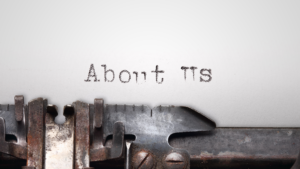
It also takes some patience and feedback between the client and designer. If you give a designer no input on what you are looking for, no samples or color requirements, then it’s hard to find a place for them to start and that may make the process longer and require more renditions of the branding package to get it just right.
It’s extremely important for clients to make sure they have an idea of what they want and be involved in the decision and design-making process. Your designer may come up with 10 designs that look nothing like what you want because they had no starting point to reference. That could cause frustration for you, and for the designer, and make it an unpleasant experience all around.
That said, once you have all of your material prepared and are ready to fully work with a designer, these are the general steps that will happen moving forward.
Step 1: Research and Planning for the Branding Process
The first step in creating a brand logo is to conduct thorough research. This includes researching your competitors, your target audience, and your industry as a whole. It’s important to understand what other logos in your industry look like, what elements they use, and what messages they convey. This research will help you to identify any gaps in the market, and it will also help you to avoid any common pitfalls.
Step 2: Define your brand’s identity in the Branding Process
Once you have conducted your research, it’s time to define your brand’s identity. This includes creating a brand positioning statement, defining your target audience, and identifying your brand’s values and personality. Your logo should reflect these elements of your brand’s identity, and it should be designed with your target audience in mind.
Step 3: Sketching and Conceptualization
With a clear understanding of your brand and target audience, you can begin to sketch out different logo concepts. This is an iterative process, and it’s important to explore different design options before settling on a final design. It’s also important to consider different variations of the logo, such as horizontal and vertical layouts, as well as different color schemes.
Step 4: Refinement and Finalization
After you have narrowed down your logo concepts, it’s time to refine and finalize your design. This includes making any necessary adjustments to the typography, colors, and overall composition of the logo. It’s important to consider how the logo will look in different contexts, such as online and offline, as well as in different sizes.
Step 5: Guidelines and File Formats
Once the logo is finalized, it’s important to create a set of guidelines for its use. This includes guidelines for color, typography, and spacing. It’s also important to provide the logo in a variety of file formats, such as PNG, JPG, and vector file formats like AI, EPS and SVG, to ensure that it can be used in a wide range of contexts.
In conclusion, the branding process and creating a brand logo is a complex process that requires a lot of thought, research, and planning. It’s important to consider your brand’s identity, target audience, and industry when creating your logo. By following the steps outlined in this blog post, you can ensure that your logo is well-designed, effective, and memorable.





